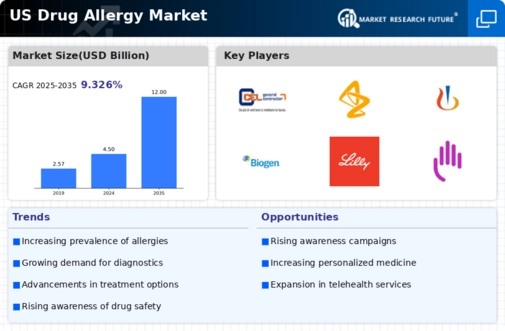US Drug Allergy Market Summary
The United States Drug Allergy market is projected to grow significantly from 4.5 USD Billion in 2024 to 12 USD Billion by 2035.
Key Market Trends & Highlights
US Drug Allergy Key Trends and Highlights
- The market is expected to experience a compound annual growth rate of 9.33 percent from 2025 to 2035.
- By 2035, the market valuation is anticipated to reach 12 USD Billion, indicating robust growth potential.
- In 2024, the market is valued at 4.5 USD Billion, reflecting the current demand for drug allergy treatments.
- Growing adoption of advanced diagnostic technologies due to increasing awareness of drug allergies is a major market driver.
Market Size & Forecast
| 2024 Market Size | 4.5 (USD Billion) |
| 2035 Market Size | 12 (USD Billion) |
| CAGR (2025-2035) | 9.33% |
Major Players
Merck and Co, Celgene, AstraZeneca, Novartis, Biogen, GlaxoSmithKline, Eli Lilly, Bristol Myers Squibb, Gilead Sciences, Pfizer, Amgen, AbbVie, Roche, Sanofi, Johnson and Johnson






















